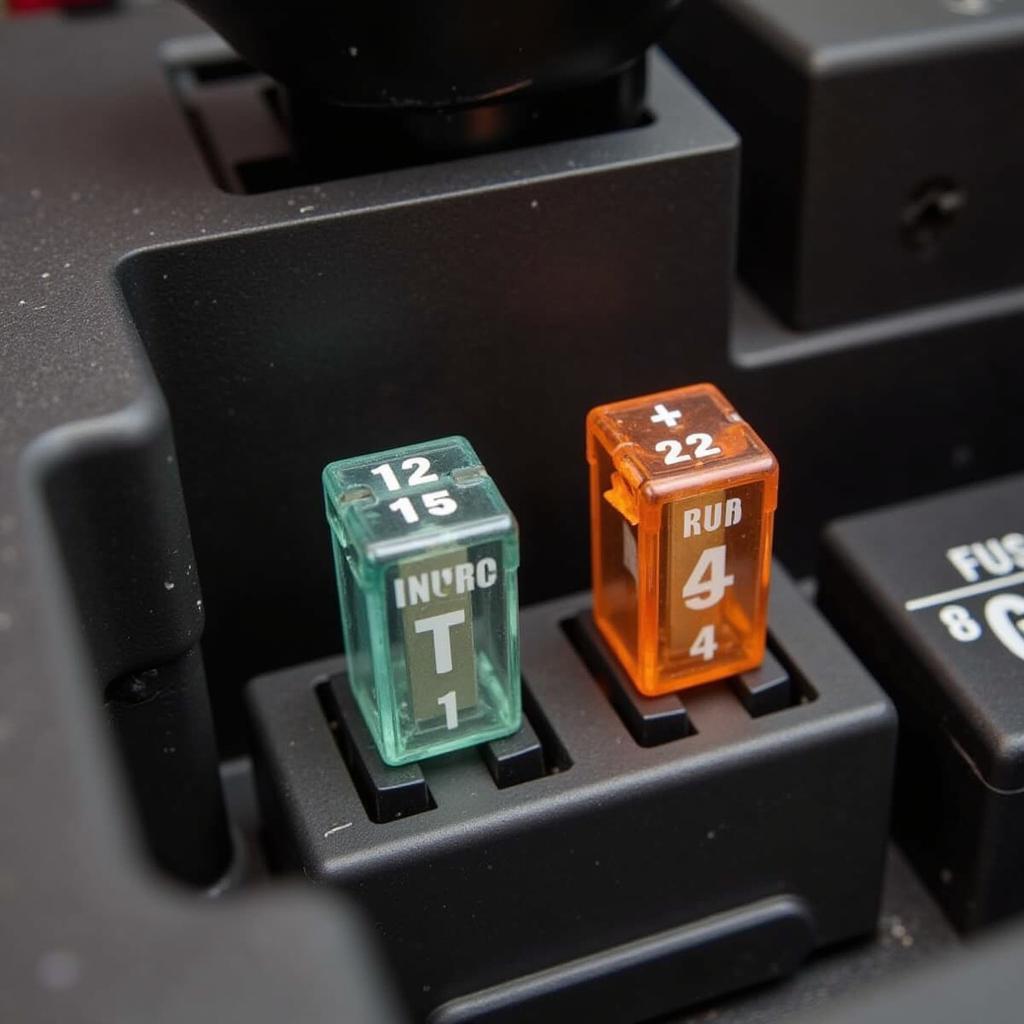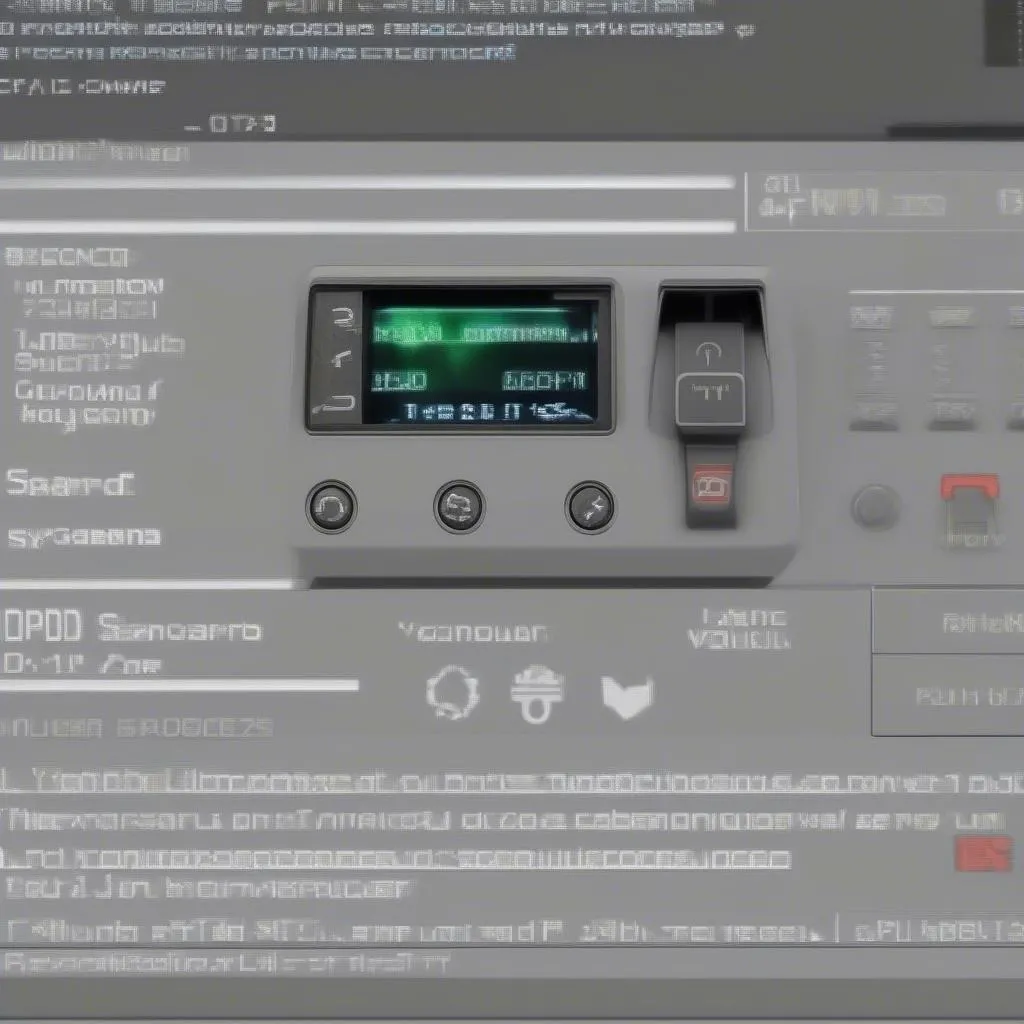A glowing “Service Brakes” warning light on your 2012 Ford Mustang’s dashboard can be a cause for concern. While it might seem alarming, understanding the potential reasons behind this warning and knowing the right steps to take can save you time, money, and unnecessary stress. This comprehensive guide delves into the common causes of a service brakes warning in a 2012 Ford Mustang and provides practical solutions to get you back on the road safely.
Decoding the “Service Brakes” Warning Light
Before we dive into the specifics, it’s crucial to understand what triggers the “Service Brakes” warning light in the first place. This light is connected to your car’s braking system, which includes components like:
- Brake fluid: This hydraulic fluid transmits force from the brake pedal to the brakes.
- Brake pads and rotors: Responsible for generating the friction needed to slow down or stop your vehicle.
- Brake lines and hoses: These carry brake fluid throughout the system.
- ABS (Anti-lock Braking System): This system prevents wheel lockup during hard braking.
When your car’s onboard computer detects an issue within this system, it triggers the “Service Brakes” warning light to alert you.
Common Causes of a Service Brakes Warning in a 2012 Ford Mustang
There are several reasons why the service brakes warning light might illuminate in your 2012 Ford Mustang. Here are some of the most prevalent:
1. Low Brake Fluid
Why it matters: Brake fluid is essential for your car’s braking system to function properly. Low brake fluid levels often indicate a leak somewhere in the system, which could lead to brake failure if left unaddressed.
Possible solutions:
- Check your brake fluid level: Locate the brake fluid reservoir under the hood and visually inspect the fluid level. If it’s below the minimum mark, add the recommended brake fluid type for your 2012 Ford Mustang (check your owner’s manual).
- Inspect for leaks: Carefully examine the area around the brake master cylinder, brake lines, and calipers for any signs of fluid leakage. If you spot a leak, it needs immediate attention from a qualified mechanic.
2. Worn Brake Pads
Why it matters: Brake pads are designed to wear down over time. When they reach a certain level of wear, a sensor embedded within the pad comes into contact with the rotor, triggering the warning light.
Possible solutions:
- Inspect your brake pads: Have your brake pads inspected by a mechanic to determine their thickness. If they are worn beyond the recommended limit, they will need to be replaced.
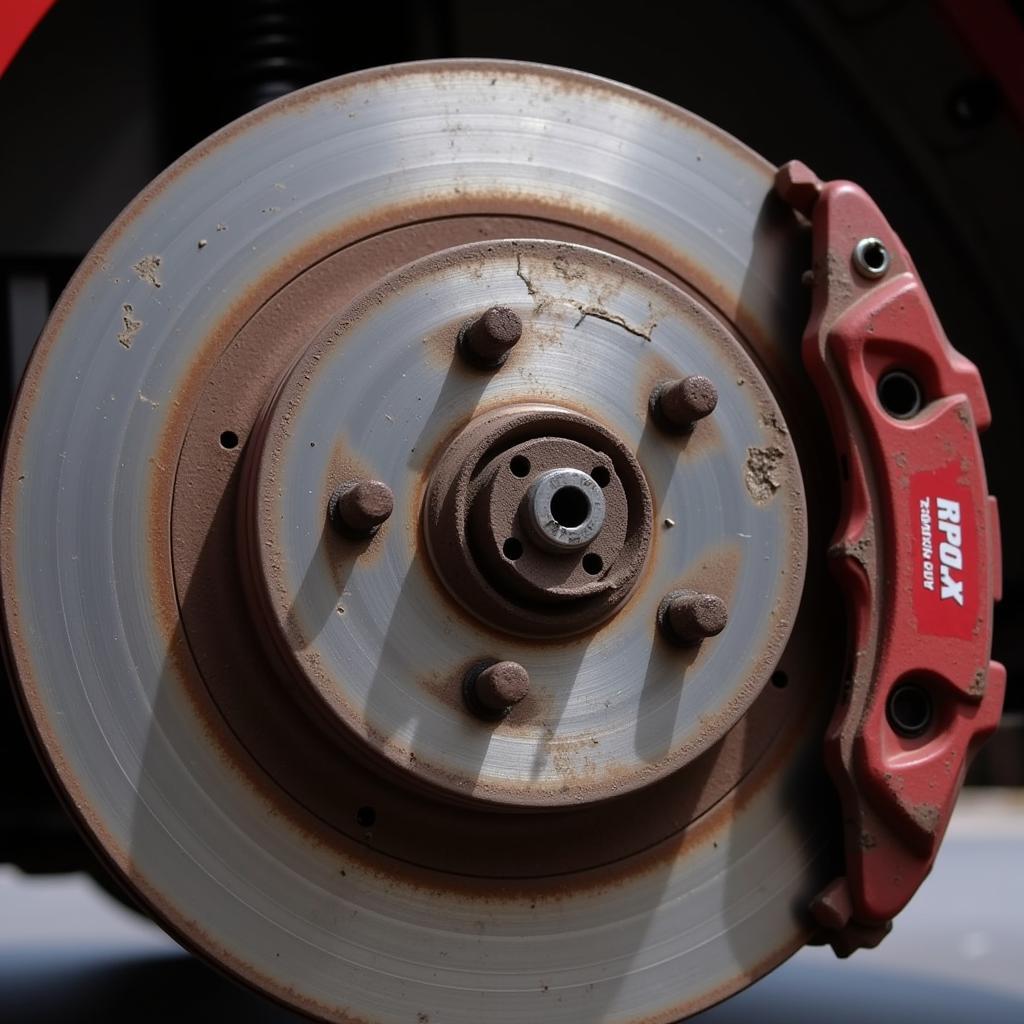 Worn brake pads on a Ford Mustang
Worn brake pads on a Ford Mustang
3. Brake Sensor Malfunction
Why it matters: The brake pad wear sensors are responsible for alerting you when the pads need replacement. However, sometimes these sensors can malfunction due to damage, corrosion, or faulty wiring.
Possible solutions:
- Inspect the brake sensors: A mechanic can check the brake sensors for any signs of damage or corrosion. If a faulty sensor is identified, it should be replaced.
4. Issues with the ABS System
Why it matters: While less common, problems with the ABS system, such as a faulty wheel speed sensor or a malfunctioning ABS module, can also trigger the “Service Brakes” warning.
Possible solutions:
- Diagnose with an OBD Scanner: An OBD-II scanner can be used to read the error codes stored in your car’s computer. These codes can pinpoint the specific issue within the ABS system.
- Seek Professional Help: Diagnosing and repairing ABS systems often require specialized tools and expertise. It’s best to consult a qualified mechanic for any issues related to your ABS.
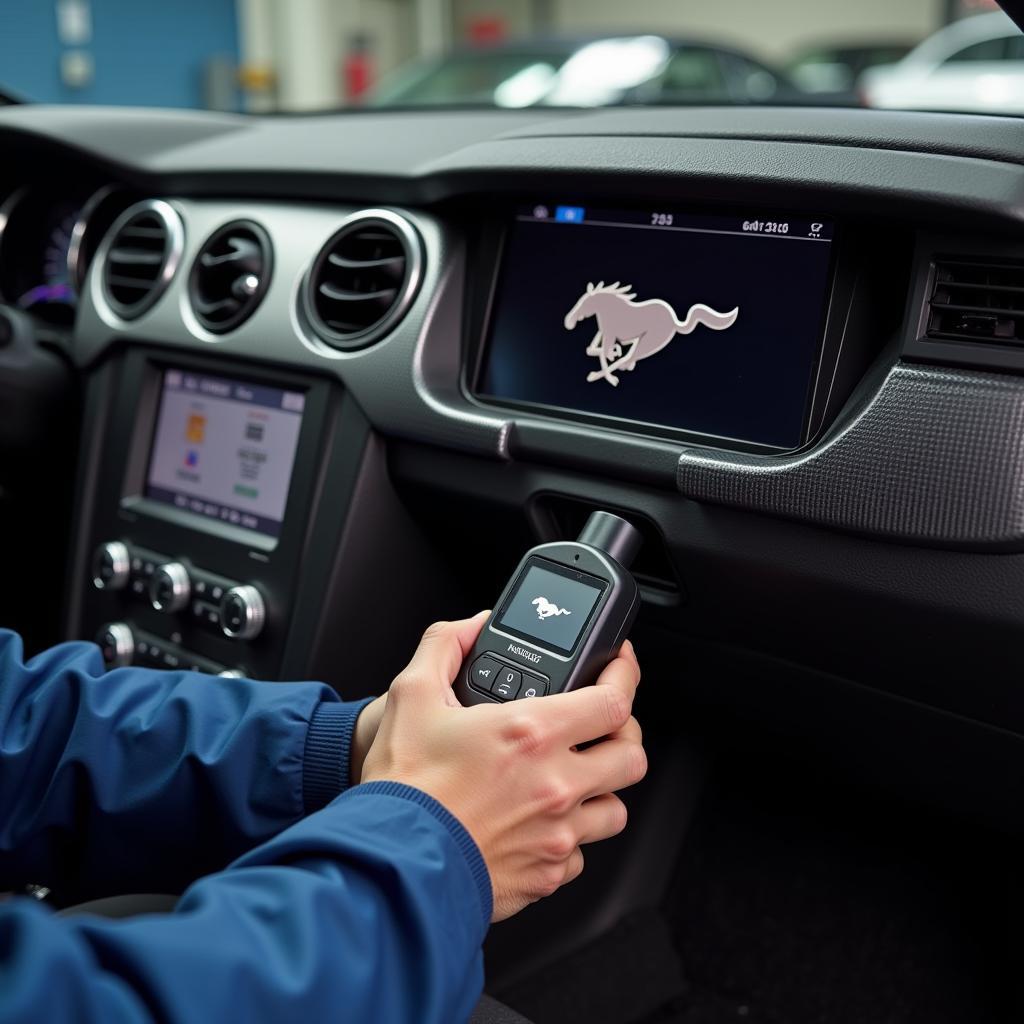 Mechanic Diagnosing ABS System on a Ford Mustang
Mechanic Diagnosing ABS System on a Ford Mustang
Addressing a “Service Brakes” Warning: DIY vs. Professional Help
While some potential causes of a “Service Brakes” warning might seem manageable for DIY enthusiasts, it’s crucial to remember that your car’s braking system is critical for your safety and that of others on the road.
Here’s a guideline on when to consider DIY versus seeking professional help:
- DIY: Checking and topping off brake fluid levels can be done by most car owners, provided they follow the instructions in their owner’s manual. However, if you are uncomfortable with any aspect of this procedure, it’s always best to err on the side of caution and consult a professional.
- Professional Help: If the “Service Brakes” warning persists after topping off the brake fluid, or if you suspect any issues with leaks, worn brake components, sensor malfunctions, or the ABS system, seeking professional help is highly recommended.
Prevention is Key: Maintaining Your Ford Mustang’s Braking System
Regular maintenance plays a vital role in preventing unexpected brake issues and ensuring optimal performance. Here are some preventative measures you can take:
- Regular Brake Inspections: Have your brakes inspected by a qualified mechanic at least once a year or as recommended in your owner’s manual. This will help identify potential issues early on.
- Brake Fluid Flush: It’s generally recommended to flush and replace your brake fluid every 2 years or 30,000 miles. This helps maintain the fluid’s hydraulic properties and prevent corrosion within the system.
- Pay Attention to Noises: Be attentive to any unusual noises coming from your brakes, such as squealing, grinding, or clicking. These sounds could be early indicators of worn brake components.
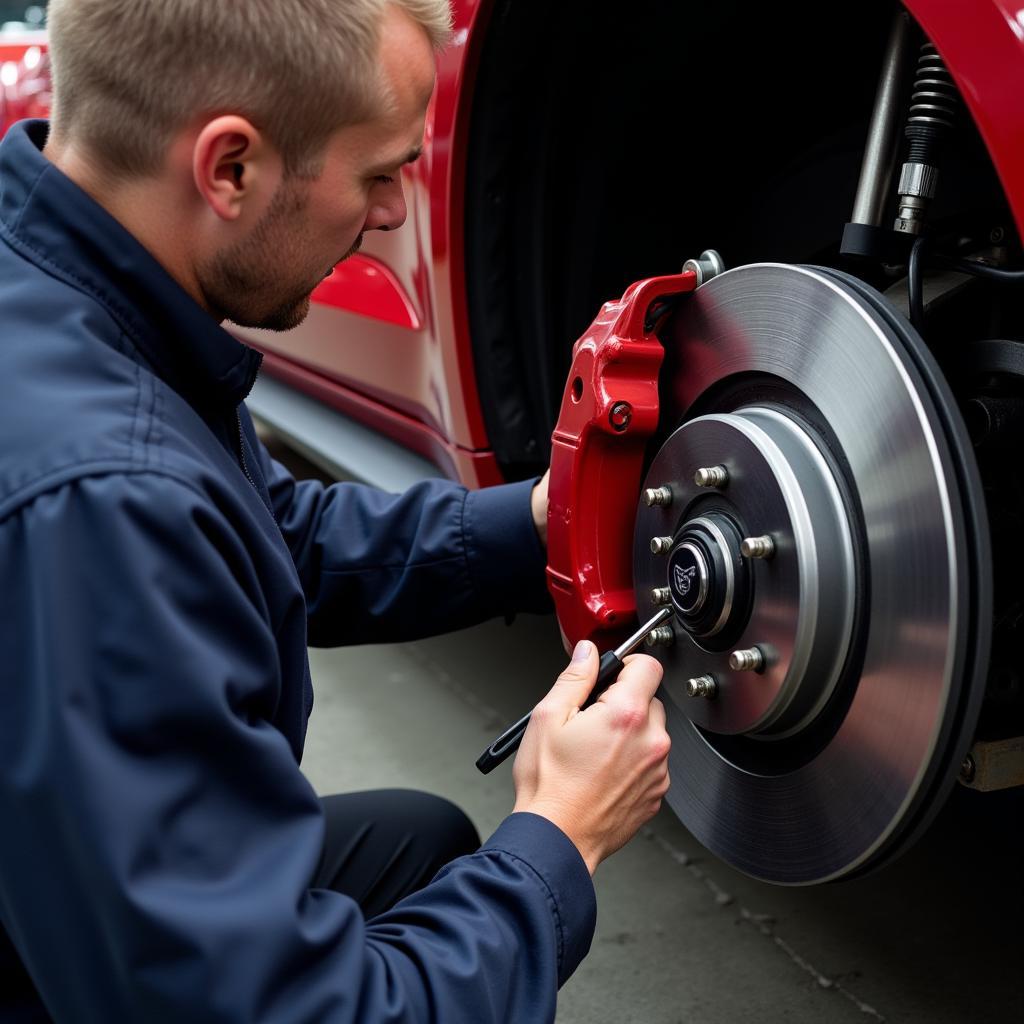 Mechanic Inspecting Brakes on a Ford Mustang
Mechanic Inspecting Brakes on a Ford Mustang
Conclusion
Ignoring a “Service Brakes” warning in your 2012 Ford Mustang can have serious consequences. By understanding the common causes, knowing how to address them, and prioritizing preventative maintenance, you can ensure your car’s braking system remains in top condition, providing you with peace of mind on the road. Remember, when in doubt, always consult a qualified mechanic for diagnosis and repair.

